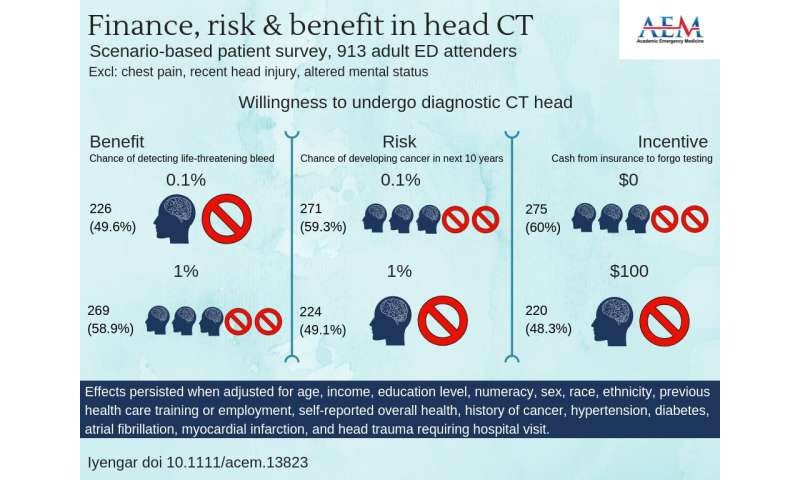
Providing financial incentives to forego testing significantly decreases patient preference for testing, even when accounting for test benefit and risk. That is the finding of a study published in the October 2019 issue of Academic Emergency Medicine (AEM), a journal of the Society for Academic Emergency Medicine (SAEM).
The lead author of the study is Rahul Iyengar MD, a resident physician at Aurora St. Luke’s Medical Center, Milwaukee, WI.
The study explores the hypothesis that patient preferences for diagnostic testing will vary substantially when the patient is presented with different quantitative information about risk, benefit and cost.
This single center survey indicated that patient “acceptance rate” for computerized tomographic (CT) imaging of the head varied substantially, even if the assumed risk and benefit of the test were varied only slightly: either 0.1 or 1%. This work supports the hypothesis that discussing benefits and risks of low-value diagnostic testing via head CT scan with patients, even when absolute benefit or risk is very low, may impact patients’ decision-making and can be the scientific cornerstone of a shared decision-making model to reduce low value diagnostic testing.
Further, providing financial incentives to forego testing significantly decreased patient preference for testing, even when accounting for test benefit and risk, suggesting that implementation of a cash incentive to forego unnecessary diagnostic testing may further prove to be a successful method to decrease healthcare costs for ED patients.
The authors suggest that further study of the impact of financial incentives on patient decision making across other clinical scenarios and in nonhypothetical patient situations is needed.
Commenting on the study is Jesse Pines, MD, the National Director of Clinical Innovation at US Acute Care Solutions and a professor of emergency Medicine at Drexel University. Dr. Pines works clinically in the emergency department at Allegheny General Hospital and Adventist Shady Grove Medical Center.
Source: Read Full Article
